Groups joined
Discussions started
Discussion Comments
Resources added
Ahmed Junaid completed a course - "Environmental DNA for Terrestrial Vertebrate Conservation"
Ahmed Junaid enrolled on a new course - "Environmental DNA for Terrestrial Vertebrate Conservation"
Ahmed Junaid completed a course - "Introduction to Conservation Technology"
Ahmed Junaid enrolled on a new course - "Introduction to Conservation Technology"
Ahmed Junaid added a new External Link - "AMMonitor 2: Remote monitoring of biodiversity in an adaptive framework in R" to Geospatial
Ahmed Junaid added a new External Link - "AMMonitor: Remote monitoring of biodiversity in an adaptive framework with r" to Geospatial
Ahmed Junaid added a new External Link - "mapmixture: An R package and web app for spatial visualisation of admixture and population structure" to Geospatial
Ahmed Junaid completed a course - "How to Create a WILDLABS Course"
Ahmed Junaid completed a course - "Camera Trapping for Conservation"
Ahmed Junaid enrolled on a new course - "How to Create a WILDLABS Course"
Ahmed Junaid added a new External Link - "spAbundance: An R package for single-species and multi-species spatially explicit abundance models" to Geospatial
Ahmed Junaid added a new External Link - "RRphylogeography: A new method to find the area of origin of species and the history of past contacts between species" to Geospatial
Ahmed Junaid enrolled on a new course - "Camera Trapping for Conservation"
Ahmed Junaid completed a course - "Introduction to Acoustic Monitoring"
Ahmed Junaid enrolled on a new course - "Introduction to Acoustic Monitoring"
Ahmed Junaid added a new External Link - "GIFT—An R package to access the Global Inventory of Floras and Traits" to Geospatial
Ahmed Junaid added a new External Link - "APCalign: an R package workflow and app for aligning and updating flora names to the Australian Plant Census" to Geospatial
Ahmed Junaid added a new External Link - "StratPal: An R package for creating stratigraphic paleobiology modelling pipelines" to Geospatial
Ahmed Junaid added a new External Link - "Remote Sensing Extraction of Lakes on the Tibetan Plateau Based on the Google Earth Engine and Deep Learning" to Geospatial
Ahmed Junaid added a new External Link - "rmacrostrat: An R package for accessing and retrieving data from the Macrostrat geological database" to Geospatial
Ahmed Junaid added a new External Link - "climetrics: an R package to quantify multiple dimensions of climate change" to Geospatial
Ahmed Junaid added a new External Link - "Freshwater fish diversity in the western Amazon basin shaped by Andean uplift since the Late Cretaceous" to Geospatial
Ahmed Junaid added a new External Link - "Climate change aggravates bird mortality in pristine tropical forests" to Climate Change
Ahmed Junaid added a new External Link - "Latin American/Caribbean Conservation Research Grant" to Early Career
Ahmed Junaid added a new External Link - "Proximal remote sensing: an essential tool for bridging the gap between high-resolution ecosystem monitoring and global ecology" to Geospatial
Ahmed Junaid added a new External Link - "Early Wildfire Smoke Detection Method Based on EDA" to Geospatial
Ahmed Junaid added a new External Link - "LIFE: A metric for mapping the impact of land-cover change on global extinctions" to Geospatial
Ahmed Junaid added a new External Link - "Wildfires offset the increasing but spatially heterogeneous Arctic–boreal CO2 uptake" to Geospatial
Ahmed Junaid added a new External Link - "Snow Leopard - Training Grant – 2025" to Early Career
Ahmed Junaid added a new Product Review - "REDD+AI"
Groups
Group
- Latest Discussion
- eDNA sampling kits
- Latest Resource
- /
- Nature Tech for Biodiversity Sector Map launched!
Conservation International is proud to announce the launch of the Nature Tech for Biodiversity Sector Map, developed in partnership with the Nature Tech Collective!
Group
- Latest Discussion
- AI accelerator for nonprofits working in the Climate area
- Latest Resource
- /
- Case Study: Drone-based radio-tracking of Eastern Bandicoots
Wildlife Drones was deployed by Zoos Victoria in a trial project tracking captive-bred Eastern Barred Bandicoots that were tagged and released into the wild
Group
- Latest Discussion
- Field-Ready Bioacoustics System in Field Testing
- Latest Resource
- /
- Nature Tech for Biodiversity Sector Map launched!
Conservation International is proud to announce the launch of the Nature Tech for Biodiversity Sector Map, developed in partnership with the Nature Tech Collective!
Group
- Latest Discussion
- Planet Imagery is no longer available on GFW
Group
- Latest Discussion
- Overview of Image Analysis and Visualization from Camera traps
- Latest Resource
- /
- HawkEars: a high-performance bird sound classifier for Canada
HawkEars is a deep learning model designed specifically to recognize the calls of 328 Canadian bird species and 13 amphibians.
Group
- Latest Discussion
- Automated Image analysis
This project aimed to reduce human-carnivore conflict by building a resilient boma for a vulnerable family in Hunyari village. It served as a model for other families, promoting stronger livestock protection. The initiative included community engagement on predator deterrence and sustainable building practices. The success of the pilot is inspiring others to adopt similar solutions.
Group
- Latest Discussion
- PhD Advice
Group
- Latest Discussion
- Feedback on PCB for Mothbox
Applications are open until April 15th
Group
- Latest Discussion
- Documentary on Conservation
- Latest Resource
- /
- HawkEars: a high-performance bird sound classifier for Canada
HawkEars is a deep learning model designed specifically to recognize the calls of 328 Canadian bird species and 13 amphibians.
Group
- Latest Discussion
- Can RGB drone data & Machine Learning be of value in Conservation?
- Latest Resource
- /
- Nature Tech for Biodiversity Sector Map launched!
Conservation International is proud to announce the launch of the Nature Tech for Biodiversity Sector Map, developed in partnership with the Nature Tech Collective!
Group
- Latest Discussion
- Advice for Junior Web Developer
- Latest Resource
- /
- Advancing Hierarchical Classification of Ocean Life
Join the FathomNet Kaggle Competition to show us how you would develop a model that can accurately classify varying taxonomic ranks!
Group
- Latest Discussion
- Ground Truth: How Are You Verifying What Maps Show?
- Latest Resource
- /
- Fires in the Serengeti: Burn Severity & Remote Sensing with Earth Engine
Fires in Serengeti and Masai Mara National Parks have burned massive areas this year. With Google Earth Engine, it's possible to quantify burn severity using the normalized burn ratio function, then calculate the total area burned by classification areas.
Group
- Latest Discussion
- From Field to Funder: How to communicate impact?
- Latest Resource
- /
- Application of computer vision for off-highway vehicle route detection: A case study in Mojave desert tortoise habitat
Driving off-highway vehicles (OHVs), which contributes to habitat degradation and fragmentation, is a common recreational activity in the United States and other parts of the world, particularly in desert environments with fragile ecosystems. Although habitat degradation and mortality from the expansion of OHV networks are thought to have major impacts on desert species, comprehensive maps of OHV route networks and their changes are poorly understood. To better understand how OHV route networks have evolved in the Mojave Desert ecoregion, we developed a computer vision approach to estimate OHV route location and density across the range of the Mojave desert tortoise (Gopherus agassizii). We defined OHV routes as non-paved, linear features, including designated routes and washes in the presence of non-paved routes. Using contemporary (n = 1499) and historical (n = 1148) aerial images, we trained and validated three convolutional neural network (CNN) models. We cross-examined each model on sets of independently curated data and selected the highest performing model to generate predictions across the tortoise's range. When evaluated against a ‘hybrid’ test set (n = 1807 images), the final hybrid model achieved an accuracy of 77%. We then applied our model to remotely sensed imagery from across the tortoise's range and generated spatial layers of OHV route density for the 1970s, 1980s, 2010s, and 2020s. We examined OHV route density within tortoise conservation areas (TCA) and recovery units (RU) within the range of the species. Results showed an increase in the OHV route density in both TCAs (8.45%) and RUs (7.85%) from 1980 to 2020. Ordinal logistic regression indicated a strong correlation (OR = 1.01, P < 0.001) between model outputs and ground-truthed OHV maps from the study region. Our computer vision approach and mapped results can inform conservation strategies and management aimed at mitigating the adverse impacts of OHV activity on sensitive ecosystems.
Group
- Latest Discussion
- Drone & ai use for uncovering illegal logging camps
- Latest Resource
- /
- INSTANT DETECT 2.0 - ALPHA TESTING
The worst thing a new conservation technology can do is become another maintenance burden on already stretched field teams. This meant Instant Detect 2.0 had to work perfectly from day 1. In this update, Sam Seccombe describes the extensive Alpha testing conducted at Whipsnade Zoo to validate the performance and find the limits of ZSL's Instant Detect 2.0 system.
Group
- Latest Discussion
- Overview of Image Analysis and Visualization from Camera traps
- Latest Resource
- /
- Nature Tech for Biodiversity Sector Map launched!
Conservation International is proud to announce the launch of the Nature Tech for Biodiversity Sector Map, developed in partnership with the Nature Tech Collective!
Group
- Latest Discussion
- Autonomizing Small Mammal Traps
- Latest Resource
- /
- Judging Panel Award Winners: 2024 #Tech4Wildlife Photo Challenge
Join us in celebrating this year’s Judging Panele Award winners!
Group
- Latest Discussion
- Advice needed for accessible acoustic monitoring
- Latest Resource
- /
- HawkEars: a high-performance bird sound classifier for Canada
HawkEars is a deep learning model designed specifically to recognize the calls of 328 Canadian bird species and 13 amphibians.
Group
- Latest Resource
- /
- Behind the Buzz Season 1: From Data to Decisions
Come along to the first season of Behind the Buzz, where we’ll bring in experts to break down the basics of global conservation policy frameworks through the lens of animal movement and explore how our community can better translate movement data to decision-making.
Group
- Latest Discussion
- Can RGB drone data & Machine Learning be of value in Conservation?
- Latest Resource
- /
- Can/Should UAVs Be The Answer To Urbanisation & Wildlife Conflicts
Over the years, a large number of developments have gone up in the area that I live in and the municipality is not doing what they should when it comes to upholding the laws that have been put in place to protect the wildlife in this protected paradise. Is anyone else around the world facing this in their communities? Can/should drones and open source software be the answer to better monitoring of construction companies that are in breach of wildlife regulations? I would like to get others thoughts on this subject as it can be complicated. GeoWing Academy has been using drones and opensource software to monitor some of the changes and damages to the environment to illustrate the issues to the local municipality and government. There is a PDF version of the article attached should the images in the article not be visible
Group
- Latest Discussion
- Can RGB drone data & Machine Learning be of value in Conservation?
- Latest Resource
- /
- What Are Innovative Technologies, and Why Should Conservationists Care?
Conservationists use tools like drones, satellites, and camera traps to monitor ecosystems and scale their impact. But new challenges like transparency, funding gaps, and engagement remain. Web 3.0 technologies offer solutions, but adoption can be complex. Understanding their benefits and barriers is key.
Group
- Latest Discussion
- From Field to Funder: How to communicate impact?
- Latest Resource
- /
- Brokering finance deals to fund nature restoration with Rob Gardner
This is the title of an episode of Ben Goldsmith's 'Rewilding the World' podcast series. I have been wondering for a while, how is it done? Here is a crystal clear outline.
Group
- Latest Discussion
- Ground Truth: How Are You Verifying What Maps Show?
- Latest Resource
- /
- What Are Innovative Technologies, and Why Should Conservationists Care?
Conservationists use tools like drones, satellites, and camera traps to monitor ecosystems and scale their impact. But new challenges like transparency, funding gaps, and engagement remain. Web 3.0 technologies offer solutions, but adoption can be complex. Understanding their benefits and barriers is key.
Group
- Latest Discussion
- Dual-/Multi-Use Technology Strategies
- Latest Resource
- /
- Nature Tech for Biodiversity Sector Map launched!
Conservation International is proud to announce the launch of the Nature Tech for Biodiversity Sector Map, developed in partnership with the Nature Tech Collective!
Group
- Latest Discussion
- Overview of Image Analysis and Visualization from Camera traps
- Latest Resource
- /
- Nature Tech for Biodiversity Sector Map launched!
Conservation International is proud to announce the launch of the Nature Tech for Biodiversity Sector Map, developed in partnership with the Nature Tech Collective!
Group
- Latest Discussion
- AgTech: Breaking out of silos
- Latest Resource
- /
- Brokering finance deals to fund nature restoration with Rob Gardner
This is the title of an episode of Ben Goldsmith's 'Rewilding the World' podcast series. I have been wondering for a while, how is it done? Here is a crystal clear outline.
Group
- Latest Discussion
- Overview of Image Analysis and Visualization from Camera traps
- Latest Resource
- /
- Nature Tech for Biodiversity Sector Map launched!
Conservation International is proud to announce the launch of the Nature Tech for Biodiversity Sector Map, developed in partnership with the Nature Tech Collective!
Bookmarks
Keep track of the resources that matter to you! Collections let you save, organise, and share content from all over the WILDLABS community. Create your first collection by clicking on the bookmark icon wherever you see it.
My Courses
These are your in-progress and completed courses. Explore more courses through our catalogue.
To find courses you have created, see your "My Draft Content" or "My Content" tabs.
Camera Trapping for Conservation
Introduction to Conservation Technology
Environmental DNA for Terrestrial Vertebrate Conservation
Settings
Ahmed Junaid's Content
AMMonitor 2
16 March 2025
AMMonitor
16 March 2025
Link
mapmixture (R package).
16 March 2025
Link
spAbundance (R package).
9 March 2025
RRphylogeography
8 March 2025
GIFT (R package).
25 February 2025
APCalign (R package).
25 February 2025
StratPal (R package).
24 February 2025
https://doi.org/10.3390/rs16030583
3 February 2025
Link
rmacrostrat (R Package).
3 February 2025
climetrics (R package).
3 February 2025
https://www.nature.com/articles/s41559-023-02220-8
3 February 2025







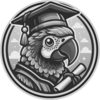

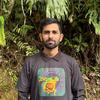











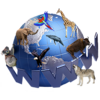






































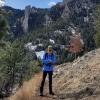


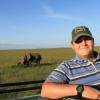




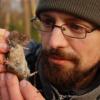







































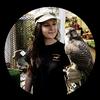













































Ahmed Junaid's Comments